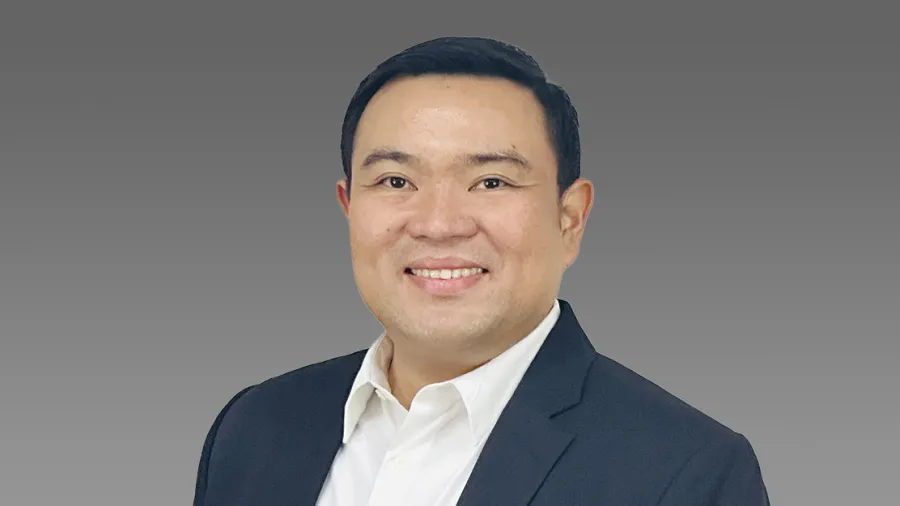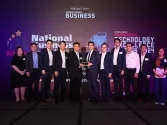
Meralco breaks into the Philippines’ solar industry with Spectrum
Spectrum has an installed capacity of more than 50 megawatts throughout the country.
Meralco entered the Philippines’ solar energy market in 2016 with the establishment of its wholly owned subsidiary, Spectrum — a time when the market was already competitive. Despite this, Spectrum thrived through the years and even past the pandemic as it leveraged Meralco’s century-old reputation.
“We entered the market at a time when it was already filled with established solar companies. Admittedly, it was hard for us to match their base at that time,” Spectrum COO Patrick Henry Panlilio, told Asian Power.
In addition, the company initially struggled with offers that cost more, compared to other players. He noted the company managed to reduce costs and compete through Meralco’s long-standing relations with its partners and manufacturers.
In 2022, Spectrum reported an accumulated installed capacity of more than 50 megawatts (MW) of rooftop solar power. It also increased its customer acquisition by 20%.
In this Q&A, Panlilio shared more insights into how Spectrum broke into the solar rooftop industry, the challenges it entailed, and the opportunities waiting to be captured in the Philippines’ solar energy industry.

What were the reasons behind its decision to establish Spectrum and venture into renewable energy?
Meralco has been the premier energy distribution utility in the Philippines for 120 years and it is accountable for around 55% of the energy distributed in the Philippines. As part of its progressive initiatives, sustainability is at the forefront and center of its operations.
It is for this reason that Spectrum was established. Spectrum embodies Meralco’s sustainability agenda of providing clean, affordable, and accessible renewable energy to its customers. As the biggest distribution utility in the Philippines, Meralco needed to ensure that grid stability is paramount and cognizant that solar and other renewable energy sources potentially can disrupt the system.
As such, the establishment of Spectrum ensures that Meralco has a hand in ensuring standards are leveled up and compliance with the Philippine Electrical Code is carried out. Even today we see that there are areas for improvement for the organization and centralisation when it comes to the policies for renewable energy.
Meralco and the Department of Energy (DoE) are working closely to harmonise the guidelines and requirements of the Energy Regulatory Commission (ERC), local government units (LGUs), and other distribution utilities nationwide with Spectrum, providing the expertise on the matter, based on actual market experience.
What are the challenges you encountered in the RE market?
During the inception of Spectrum, we came across many challenges that made our entry into the renewable energy space difficult.
The first issue we had to face was that we entered the market at a time when it was already filled with established solar companies. Admittedly, it was hard for us to match their base at that time. As with other new companies, we also did not have any portfolio to show our targeted customers or potential customers, which are particularly the businesses who were meticulously considering their requirements.
Another thing worth noting is at the start, our products were relatively more expensive, compared to the last few years. Without standing partnerships and relationships with vendors and suppliers, we couldn’t provide competitive prices to our customers. And eventually, we were able to leverage the relationship of our parent company’s supply chain to establish these partnerships, and with these manufacturers. With these, we can improve our prices eventually and lead to more customers. Some of our first customers chose us because of our affiliation with Meralco.
These large customers enabled us to establish ourselves as one of the premier solar rooftop providers in the Philippines. As time went by, we only got bigger and we made sure to adapt to policies and regulations that the government mandated. We pride ourselves in making sure that our solar solutions reach international safety standards. Right now, we’re working closely with the ERC, the DoE, and the LGUs of specific installations in compliance with these policies, whilst also having Meralco at the side, providing an expert opinion based on experience concerning the creation and liberalisation of these guidelines and policies for solar.
What were the lessons you learned from this experience?
Consumers are very meticulous. They are looking for somebody who can provide value for money, which not only means competitive price. It also means being present after sales. Meralco established Spectrum for this, because solar and other renewables are for the long term. And it is considered an investment, especially during the seven years back down. It was really expensive. So, you need to maintain these facilities for them to efficiently work and safely work. That’s how we were organized and that’s what we did, especially when offering this sense of reliability to our customers.
You need to have reliable partners in the industry, partners on the equipment side, and also you need installers who can provide you quality service. Fortunately, in Meralco or Spectrum, since we have robust engineering processes, we apply that before we promote all of this equipment and include our designs. That’s very important because you’re investing in a facility that also can last you for 25 or even 30 years. That needs to be maintained as well. And definitely, this is something that Meralco or Spectrum wanted to continue as the business model when Spectrum was established.
How does Spectrum operate? What are your major partnerships?
We were able to establish solar for business, which is our prime service, and this is essentially the end-to-end of an EPC (energy performance contract) solar generating facility for our commercial and industrial customers, from SMEs (small and medium-sized enterprises) to large multinationals. We also have solar for homes, and our service for residential customers. The key thing here is that they’re able to, of course, avail of similar standards. And, of course, the safety and integrity of the installations are upheld.
The other one would be microgrids and utility-scale, so currently, [it’s] one of our biggest focuses in 2023. This service deals with large installations with hundreds of megawatts in capacity. This serves as either the solar energy generating plant for some communities or as a power generating facility that sends power into the power grid itself.
We also have operations and maintenance and this service is, particularly and definitely, what we are proud of. In Spectrum we do not limit our maintenance packages to our installations only. We encourage those with existing solar systems on their homes, or office buildings to have them checked by us.
So as experts in the industry and backed by Meralco’s energy expertise, we believe that we can ensure that every installation is compliant with the Philippine Electrical Code.
More than 99% of our portfolio is from the C&I (commercial and industrial) business with a few residential customers. We only started offering our residential solutions when the pandemic kicked in because a lot of people are looking for ways to save on electricity, especially when working from home, and online schooling was very prevalent.
We have customers from the retail side, such as mall operators, industrial side, such as food manufacturing, and electronics manufacturing, as well and also other customers from consumer goods. We also have some LGUs that were able to serve their requirements
What’s next for spectrum? Do you have any upcoming projects or partnerships?
We have major partnerships that we would like to proceed with, but are mostly focused on, again, the commercial and industrial sectors. We’re targeting to build about 23MW minimum capacity for 2023. This is aside from engaging utility-scale developers and electrical operatives for potential EPC contracts for their solar farms and microgrids all over the Philippines.
We are focusing also on building bridges with more trade and business organisations, but not limited to the members of the Philippine Chamber of Commerce and Industry as we want to bring the benefits of solar directly to them.
We are also continuing to develop partnerships with LGUs to install solar-generating facilities. We have a lot of them in our portfolio already, which we’ll be pushing for this year to help them achieve the government mandate of installing solar facilities in their businesses and offices.
We also intend to look at other renewable sources, but we have our hands full with solar right now. Solar is just on the rise and a lot of awareness needs to be made, not only from the government, but also from the distribution utilities, businesses, and service providers. Since solar is the prevailing technology and the cheapest and the most accessible and affordable technology, we plan to pursue more of our efforts here in this space.
How would you characterize the Philippine RE landscape, particularly in solar energy?
The renewable landscape is very, very promising. Solar is on the rise. Renewable energy comprises only about 22% of the Philippines’ energy production, with wind and solar amounting to less than 2%, based on DoE’s latest recent estimates. That doesn’t mean the Philippines is lacking opportunities for renewable energy.
The Philippines is an untapped treasure trove for renewable energy projects, particularly for solar as the country is situated at an optimum angle from the equator. It’s just a matter of developing these facilities to make the [most of the] circumstance.
Part of the Renewable Energy Act of 2008 is the Renewable Portfolio Standards or RPS. It’s a market-based policy that requires our distribution utility, like electric cooperatives, and retail electricity suppliers to source an agreed portion of their energy supply from eligible renewable energy sources. Before, it was only 1%, and last year, they enhanced it to require up to 2.5%. The number may look small, but this is a big encouragement to invest in renewable energy sources, especially for the developers of large-scale solar and utility-scale farms.
Considering the country’s effort to embrace RE, we are on the right path, and with the laws such as Republic [Act] 11285, the Energy Efficiency and Conservation Law, at the forefront of requiring businesses to have part of their energy consumption taken from renewable energy sources, this leads companies to look for their solar providers as this is the most accessible source of RE. Policy shifts will play an important role.
Just very recently, the government allowed 100% foreign ownership when it comes to related renewable energy projects. This would attract more foreign investments and open up great opportunities not just for Spectrum, but for all renewable energy companies in the Philippines.








![Cross Domain [Manu + SBR + ABF + ABR + FMCG + HBR + ]](https://cmg-qa.s3.ap-southeast-1.amazonaws.com/s3fs-public/styles/exclusive_featured_article/public/2025-01/earth-3537401_1920_4.jpg.webp?itok=WaRpTJwE)
![Cross Domain [SBR + ABR]](https://cmg-qa.s3.ap-southeast-1.amazonaws.com/s3fs-public/styles/exclusive_featured_article/public/2025-01/pexels-jahoo-867092-2_1.jpg.webp?itok=o7MUL1oO)









 Advertise
Advertise


